James Thomas (b. 1958) shares his inspiration for drawing pet portraits, for himself and for others as a way to remember their beloved cats and dogs.
On Drawing Pet Portraits
BY JAMES THOMAS
I was born and raised in Springhill, Louisiana and currently live about 15 miles from where I grew up. My parents used to comment how I was constantly drawing at a young age and talked about how I would lie in front of the television and draw “Flipper” at the age of five. It apparently amazed everyone that I could put fine details in my drawings. My parents also provided supplies when needed, which gave me interest in the art world.
My seventh grade teacher gave my parents contact information for a lady, Mrs. Hill, who taught oil painting classes. For the next five years, four to six hours a week I worked with brushes, mixed colors, and learned the basics of oils. After high school I went into a 17-year career of automotive collision repair and learned to mix and spray paint, airbrush and weld. In 1994 I went to Southern Arkansas University (SAU), where I received a BA in Graphic Design; in 1998 I went to Louisiana Tech University where I received a Masters in Art. After LA Tech I took an adjunct position back at SAU Mag teaching Art Appreciation, Design, Ceramics 1, and Drawing Classes.
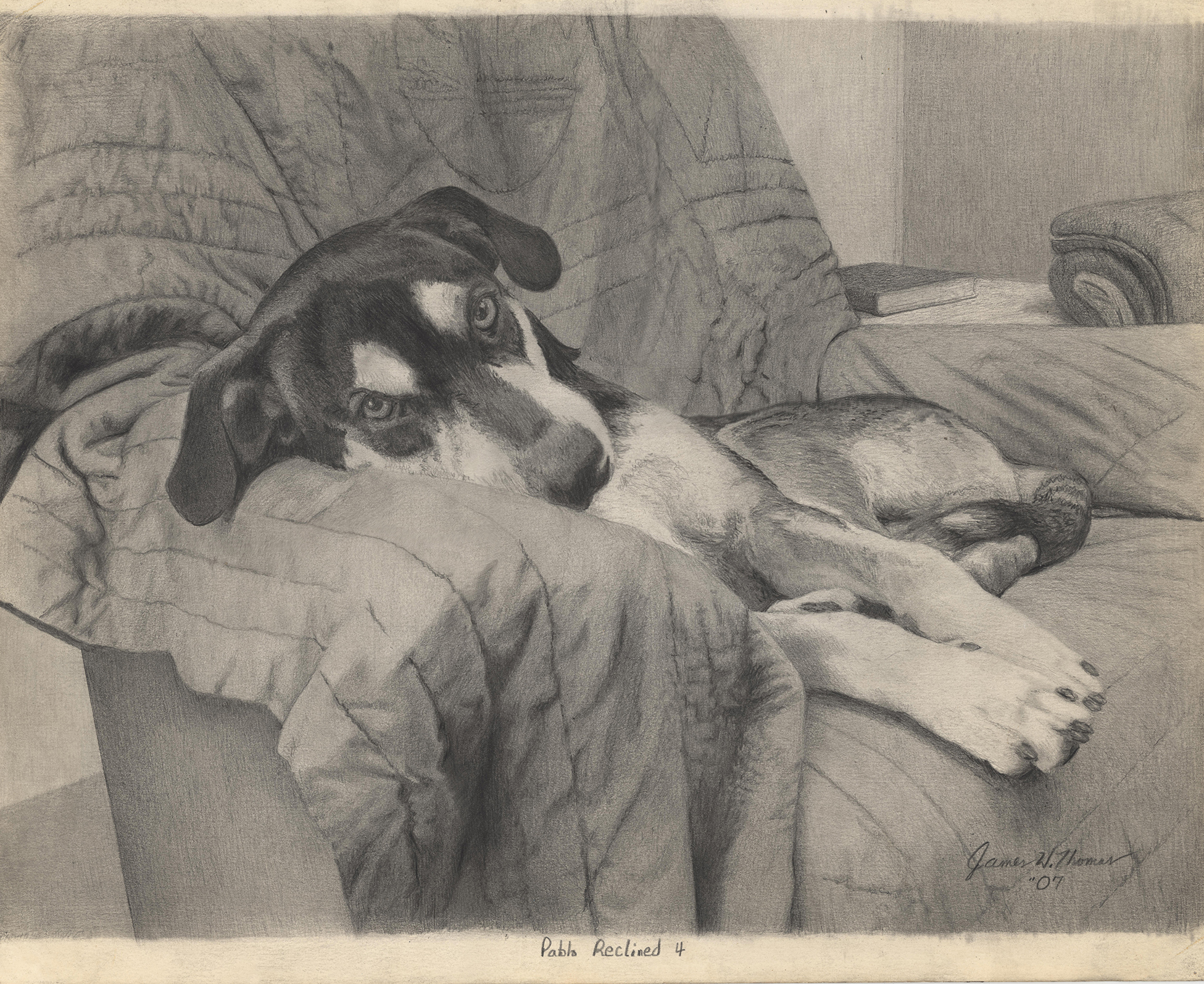
In ‘07 I fell while building my studio and was laid up with a busted leg. I took several photographs of my best buddy, Pablo, a beautiful mutt who helped take care of me. I chose four of my favorite photos and I spent hours drawing him and created a series of portraits that mean so much now.
About a year after Pablo passed away a friend and animal rescuer saw two of the portraits of Pablo. He commissioned a portrait of “Sookie” in graphite pencil for another animal rescue friend who had just lost her beloved dog to illness. When the portrait was given to the young lady, she and a roomful of men and women went to tears. I then saw pet portraits were powerful and could enrich the lives of other animal lovers as I was enriched by the portraits of Pablo. Since the portrait of Sookie I have completed over 30 animal and human portraits. These portraits are going to be handed down to family for generations.

One thing to think about is that Sookie is making eye contact with us, the viewer, and that the camera was at her eye level. This really makes for a nice portrait.
On Pricing Commissions
When I first began creating portraits for other people I was concerned about being fair to everyone when quoting a price. Keeping the size of the portraits uniform is one way to be consistent. It may also require more than one photograph as reference and may be several images compiled. It was said with the advent of the camera that the portrait artists were obsolete. I embrace the camera and in my work try to enhance the given image.
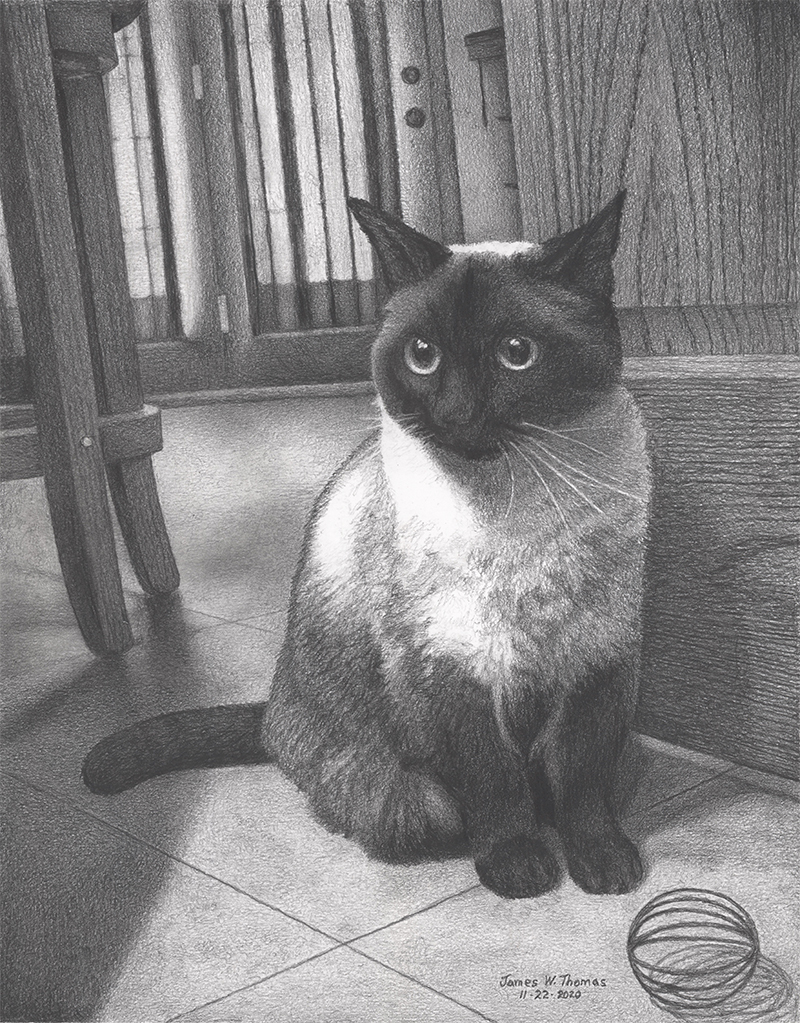
On Portrait Reference Images
Sometimes the reference image is foggy or even blurred or the lighting may be coming from opposite sides of the subjects. More than once I have had to compile seven or eight images to get a discernible reference image to work from. The reference for Sophie was a crisp color image taken by the client via cell phone and it was downloaded into and altered in Photoshop.
After moving the cat toy closer to her it was then cropped to a working format. Once the final image has been approved by the client it will be printed as a full scale reference. This reference image is printed in four pieces which are laid out.
Using my own registration lines, the four reference images are taped onto the paper and then using an Architects Dividers the important contour lines are lightly laid out. Moving the prints around and working through little windows of paper and masking tape helps with the fine details.
An eye is created by varying tones to indicate shapes and implied lines, for an eye is not drawn but instead is shaped by the shading.
The best advice I have been given concerning art projects came from an amazing Instructor at SAU. “Turn in a Piece of Art.” At the heart of every piece that I do is, “Turn in a Piece of Art.”
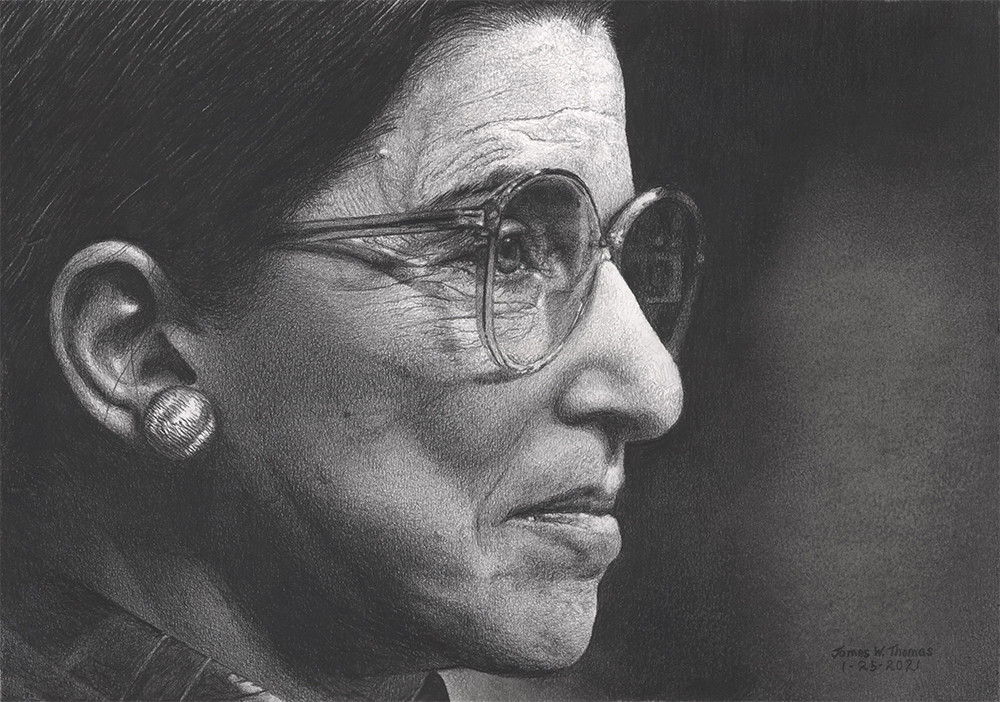
On Drawing Materials and Art Supplies
For my graphite portraits I use a 14420 PrismaColor Graphite Pencil. It gives me the richest pure black after being sprayed with Workable Fixatif.
My main paper is the Strathmore Bristol Vellum 300 series 100 lb. wt., for it has a nice heavy Bristol board feel to it and a nice surface tooth. There is a slight dimpled surface to it that can be a problem when working a photorealistic piece but I use 200 grit sandpaper if I need a smoother surface to work on.
Instead of using an eraser many times I use 3M automotive masking tape to lift the graphite from an area that is too dark because even the best erasers can leave a greasy appearance.
If it is a color piece that I am working then I use PrismaColor Premium colored pencils. (Many of my materials come from Dick Blick. They are fair on pricing and have always got my orders correct and delivered on time. Living about 60 miles from the nearest art supply store, ordering materials online has been my best option.)
I look at a graphite piece as if it were an oil painting in grays and white and black, but done with a very small brush. Through those little windows of masking tape and paper I want to activate every square inch of the picture plane.
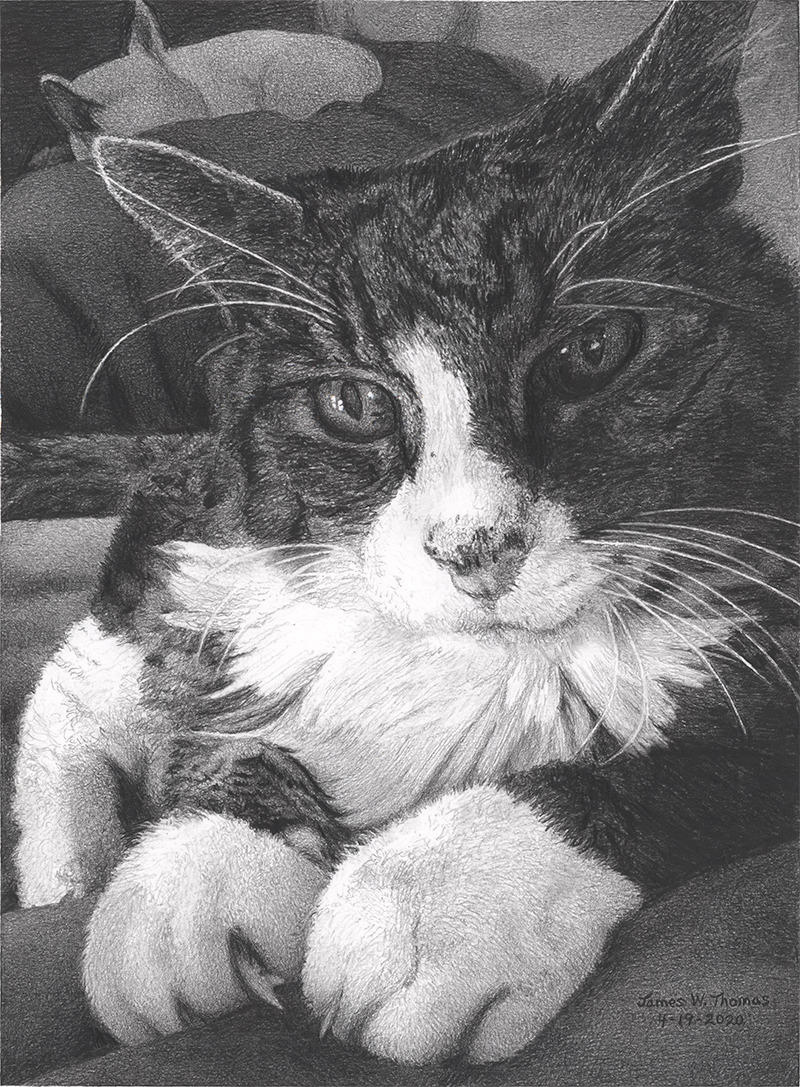
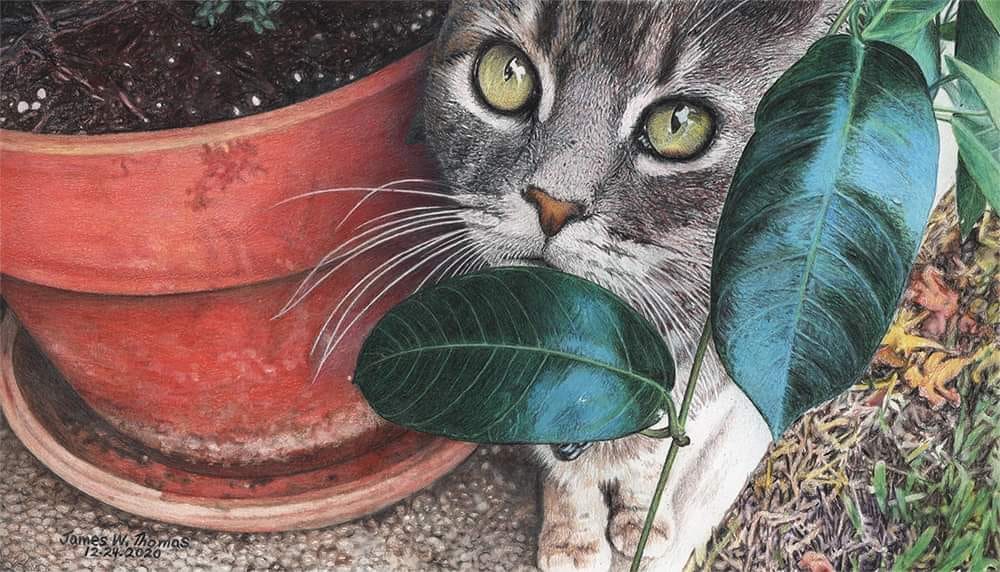
The reference image was supplied by the Client. I felt the Christmas colors were fitting for the season.
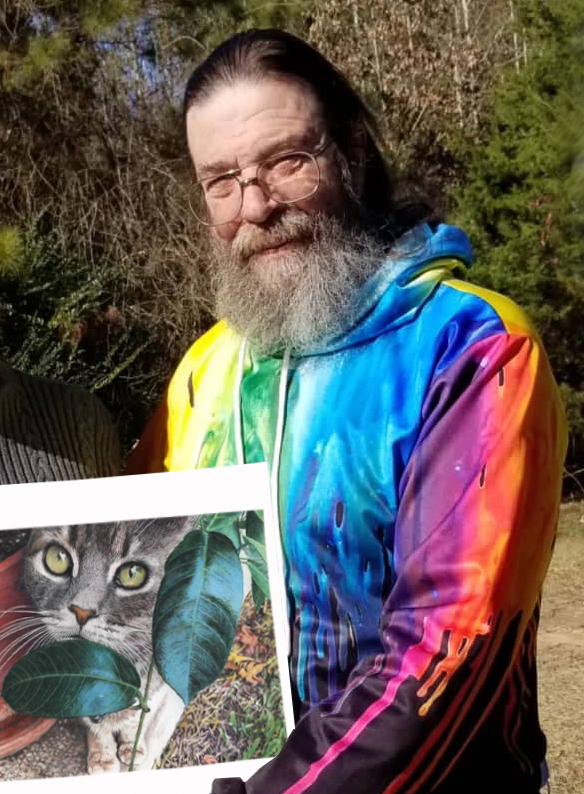
Connect with James Thomas on Facebook.
Related Article > Painting of the Week: Dogged Determination


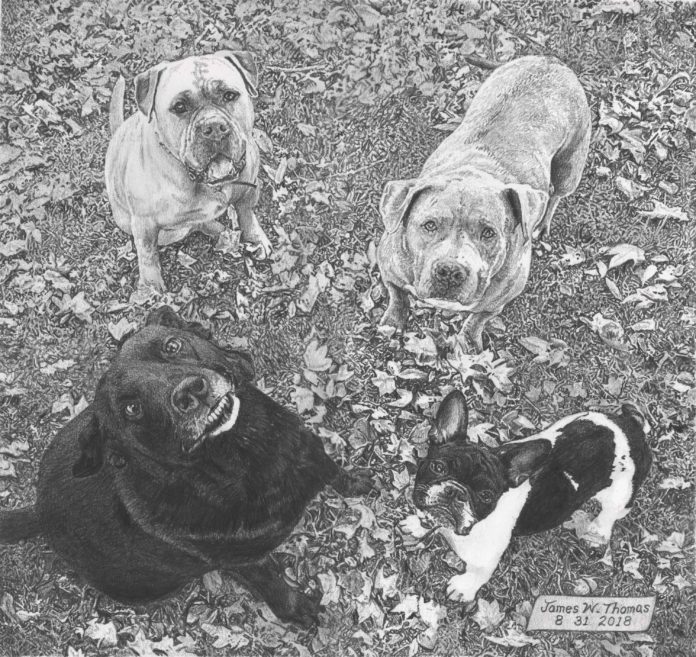



Loved the article by my friend James Thomas on Pet Portraits.
I have watched your work become a unique style that involves observation of the subject and gradually a finished piece of art . It seems to come to life with your patience and how you gently encourage the subject to live and breathe on its own. I remember your early work as you learned from each one how to apply and remember the best techniques to push your next idea . 👍
Your story about how you developed as an artist is wonderful. I don’t understand what you mean by the following:
“After moving the cat toy closer to her it was then cropped to a working format. Once the final image has been approved by the client it will be printed as a full scale reference. This reference image is printed in four pieces which are laid out.
“Using my own registration lines, the four reference images are taped onto the paper and then using an Architects Dividers the important contour lines are lightly laid out. Moving the prints around and working through little windows of paper and masking tape helps with the fine details.”
Do you use the graph lines method to make your portraits?
Also, your paint drips jacket is amazing.
Thank you for your reply.
Comments are closed.